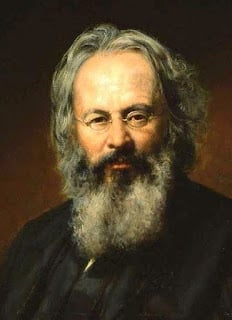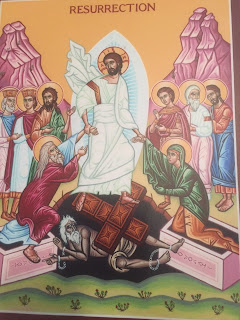« Heartily, deeply did I ever reciprocate Dr. Brownson’s affection, and the long and eventful years have but strengthened more and more my love for him and my admiration for his genius – convictions and emotions which have drawn from me in these articles my feeble attempt to estimate his providential mission and to introduce my countrymen to the study of his works » [Isaac Hecker, « Dr. Brownson and Catholicity, » Catholic World, 46, (1887), p. 235].
Largely forgotten among contemporary American Catholics, but someone whoi deserves to be remembered and appreciated even still, Orestes Brownson was born in 1803 and died on this date in 1876. He had already established himself as a leading American intellectual, a philosopher, and a social theorist, as well as Unitarian clergyman, well before his conversion to Roman Catholicism in 1844, after which he became perhaps the most prominent lay Catholic voice in the United States Church. He contributed to the Transcendentalist critique of Unitarian empiricism, articulating an alternative idealist philosophical perspective that would continue to inform his mature thought as a Catholic. Although he would later vote for Lincoln, Brownson began as a Jacksonian Democrat, with genuinely radical social and economic theories Both religiously and politically, Brownson was an important early influence on the young Isaac Hecker (1819-1888). At the end of his life, Hecker remained supportive of Brownson’s earlier social and political ideas. « The ominous outlook of popular politics at the present moment plainly shows that legislation such as we then proposed, and such as was then within he easy reach of State and national authority would have forestalled difficulties whose settlement at this day threatens a dangerous disturbance of pubic order. » [« Dr. Brownson and the Workingman’s Party Fifty Years Ago, » Catholic World, 45, (1887), pp. 207-208.]
Concerning Brownson’s religious conversion to Catholicism, Hecker in that same article [p. 207] wrote « it was a glory and a triumph for the Catholic Church to obtain the conversion of such a man and to hold that free soul in most contented allegiance till the hour of death. »
The youthful and then life-long friendship between Brownson and Hecker was of great significance for both of them in their respective spiritual journeys and, by extension, for the 19th-century American Catholic Church. Brownson met the Hecker Brothers in New York City in 1841 and quickly became a kind of mentor to the young Isaac Hecker, eventually steering him to Brook Farm, the contemporary communal experiment Brownson valued most highly. The younger and less well educated of the two, Hecker at the outset of their friendship was definitely a disciple of Brownson. As Brownson’s biographer has highlighted, however, « the disciple had something to teach the master, and Brownson knew it. Reading his correspondence with Hecker during this period gives one the impression that it was Hecker who brought the personal to the fore in Brownson. Brownson was drawn to that which he criticized in Hecker and knew, instinctively, that Hecker possessed something that he did not. Brownson was attracted to the difference.” [Patrick W. Carey, Orestes A. Brownson: American Religious Weathervane (Grand Rapids: Eerdmans, 2004), p. 138.]
Indeed, Isaac Hecker’s first book, Questions of the Soul, written as a Redemptorist missionary priest in 1855, which attempted to demonstrate the positive aspects of Catholicism as the response to the deepest questions and desires of the human soul, seemed to liberate Brownson from his immediate post-conversion commitment to a more polemical approach to apologetics. To quote Carey again: Brownson’s review of Hecker’s book “demonstrated a thoroughly positive assessment of Hecker’s achievement, and an acknowledgment that his own previous polemical style of apologetics was neither effective nor what the times demanded. … Hecker’s book clearly awakened Brownson to the defects in his own previous approach.”
Brownson’s writings during that period represented an attempt to craft a genuinely Catholic conception of politics and society, in contrast to the perennial tendency to accommodate to American reality by treating politics as largely autonomous. That concern perdured as a priority for Brownson, who in October 1870 wrote: “Even our Republic goes the way of all the earth, and our Catholic population hardly seem aware of their mission as Catholics. Outside of the Sanctuary they are hardly distinguishable in their social and political action from non-Catholics.”
Ultimately, he understood that mission as being « to Catholicize America, not Americanize Catholicity.” On the other hand, his intense ultramontanism did not turn into integralism. Rather, he understood that European political conservatism was likely a losing cause with which the Church should not be identified. In particular, Brownson recognized that those who supported the absolute continuation of the Papal States against Italian national aspirations, which were inexorably leading to the unification of Italy, were wrongly identifying a particular political goal with the Church’s fundamental interests.
Both Brownson and Hecker had been influenced by the 19th-century German Catholic theologian Johann Adam Moehler (1796-1838) who had emphasized the Church as the continuation of Christ’s incarnation in a visible structure. Both believed that neither Calvinism, Unitarianism, nor Transcendentalism could appeal long-term to the more moderate American mentality, although of the two Brownson was more sensitive to the demographic realities of American Protestantism and demonstrated a far greater appreciation of non-New England-based religion (e.g., Evangelicalism and Methodism) than Hecker did.
Although Hecker and Brownson began to diverge somewhat in their views in their later years, they remained friends, and Hecker never ceased to admire Brownson’s accomplishments. Hecker considered Brownson’s primary work of political theory, The American Republic (1865), to be « the greatest work yet written in America on general politics. » [« Dr. Brownson in Boston, » Catholic World, 45 (1887), p. 466.]
A decade after Brownson’s death, Hecker expressed his support for a movement to erect a monument to Brownson in New York’s Central Park, but added: « The best monument to Dr. Brownson’s greatness is his works. … They ought to be in every American library of any character. » [« Dr. Brownson and the Workingman’s Party Fifty Years Ago, » Catholic World, 45, (1887), p. 200.]
Photo: Orestes Brownson, Portrait by G.P.A. Healy, 1863.
A bust of Brownson was in fact commissioned in the 1890s by the Catholic Club of New York for its building on Central Park South. When that building was demolished, Brownson’s bust was moved to Riverside Drive and 104th Street. In the 1930s, however, it was overturned by vandals and put in storage. In 1941 Father Robert Gannon, SJ, the President for Fordham University (1936-1949), acquired the bust from the Parks Department for its placement on the Fordham campus in the Bronx, where it remains atop a high granite pedestal. (Brownson was awarded Fordham’s first honorary degree in 1856.).




